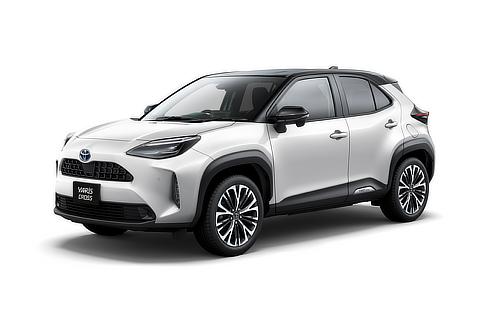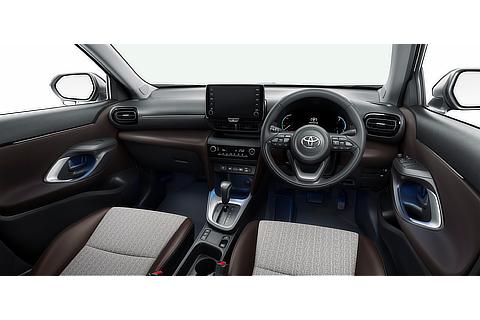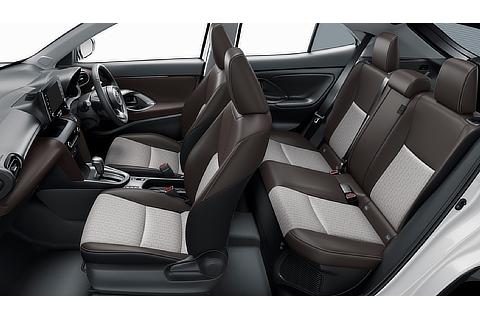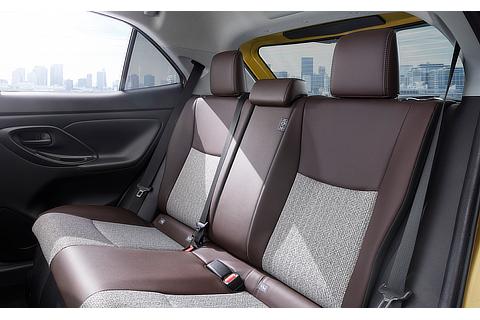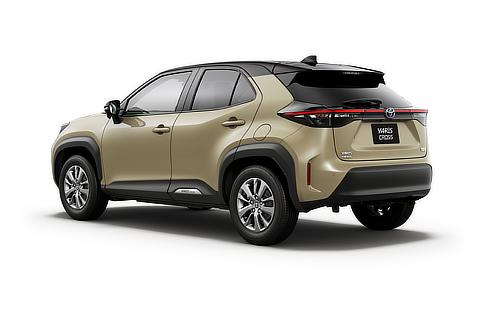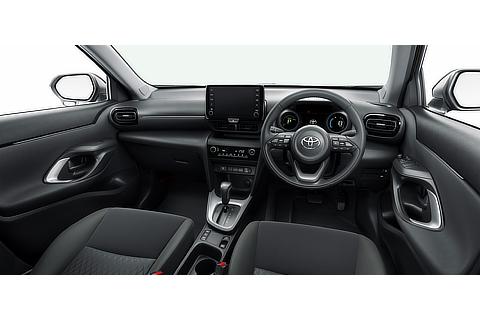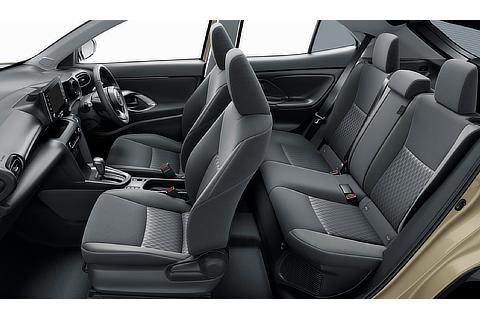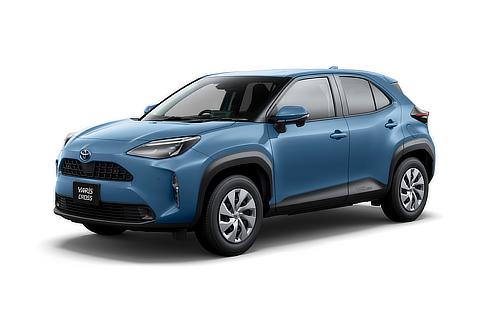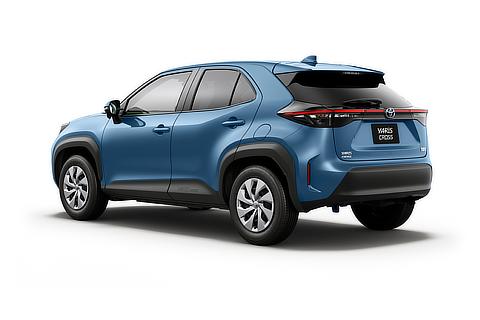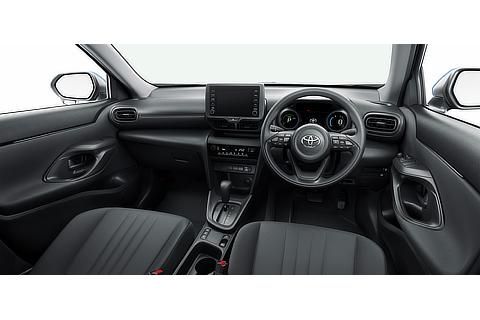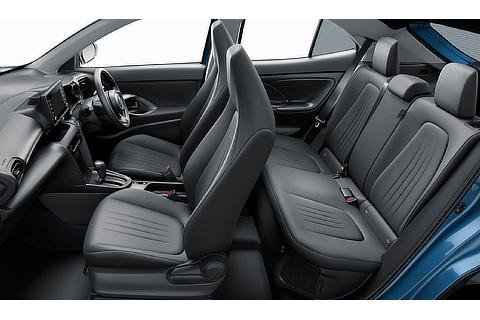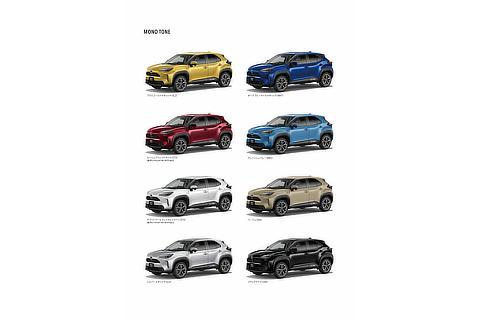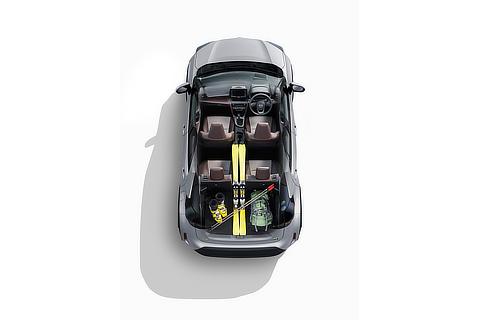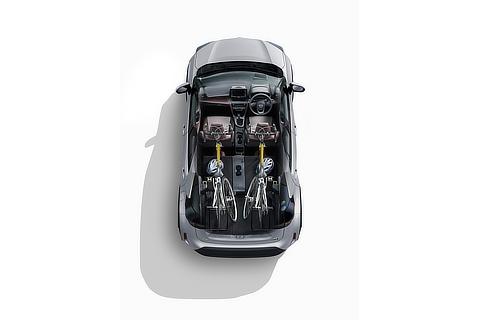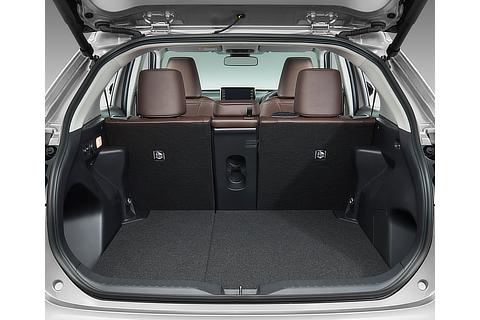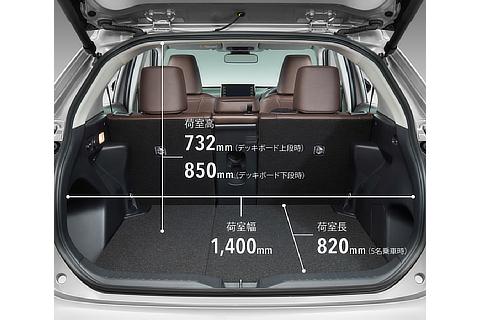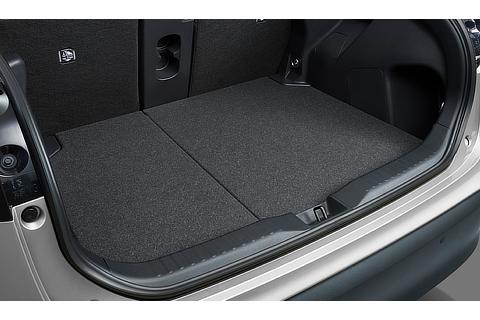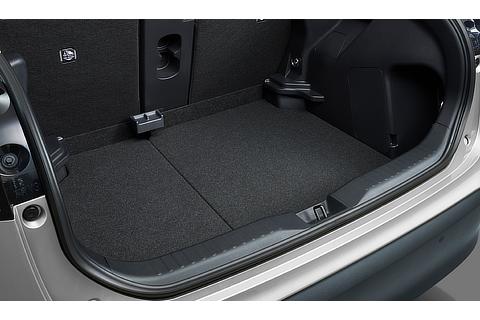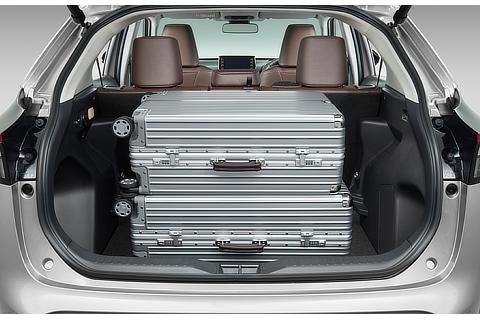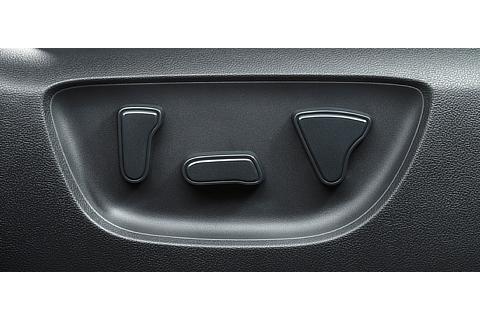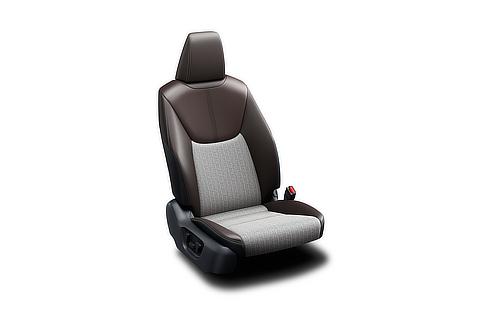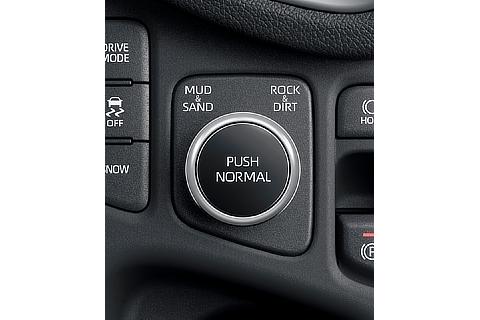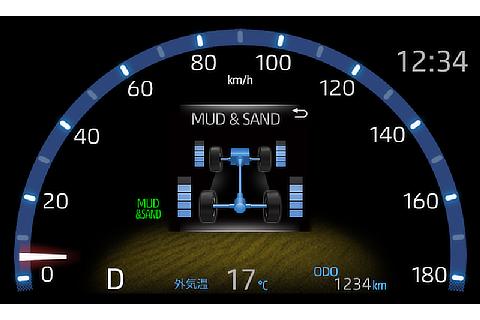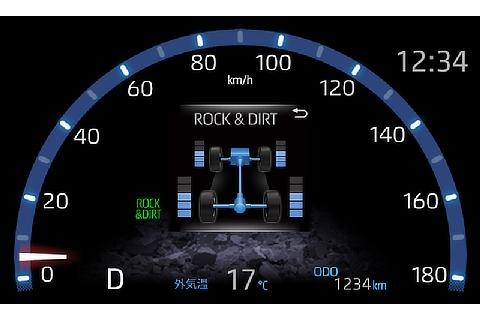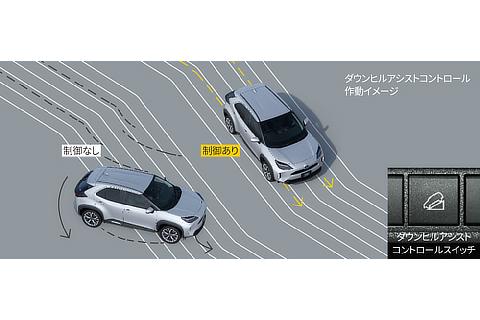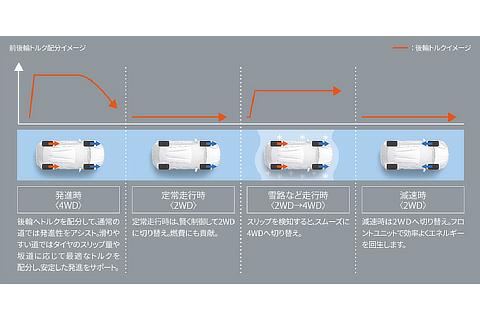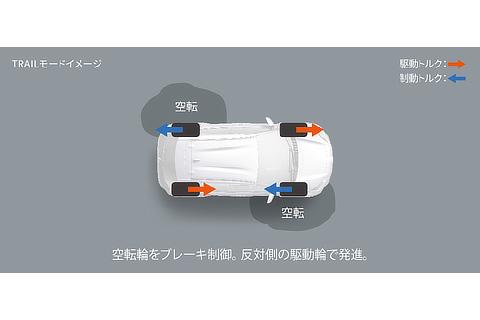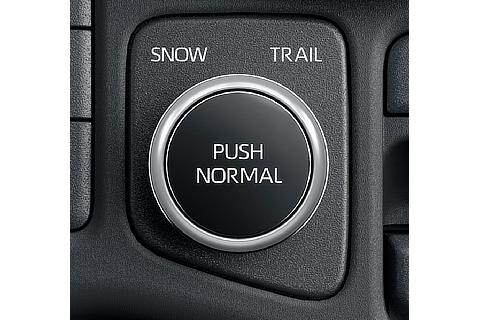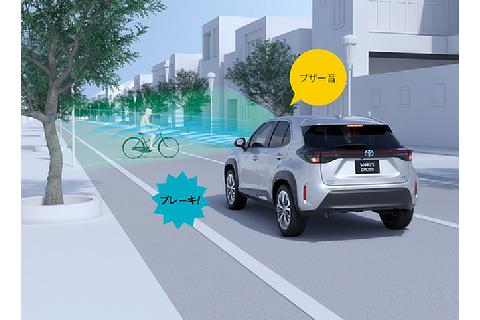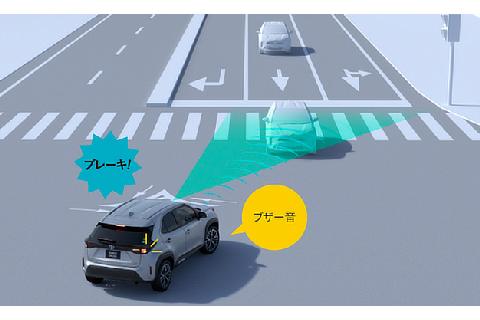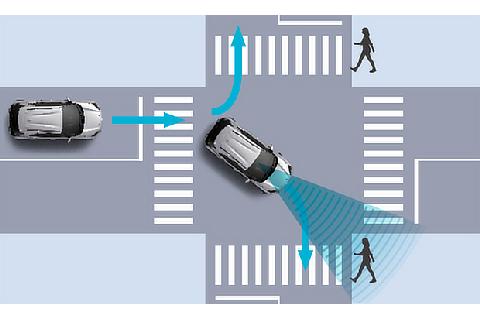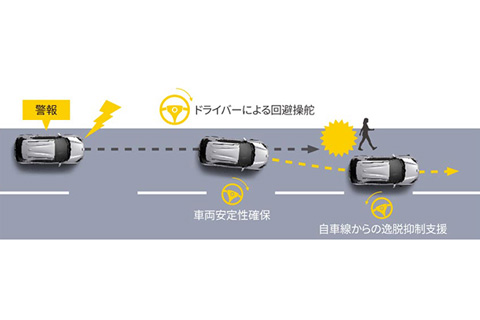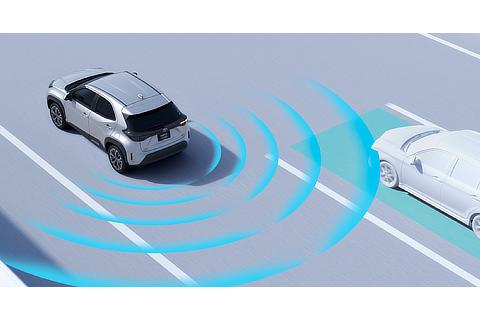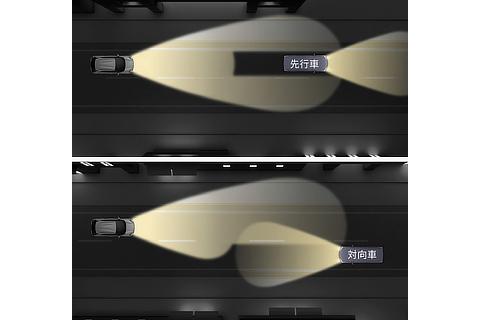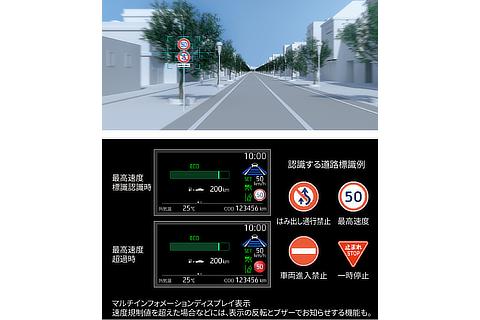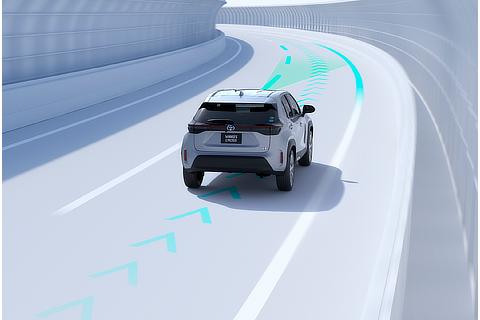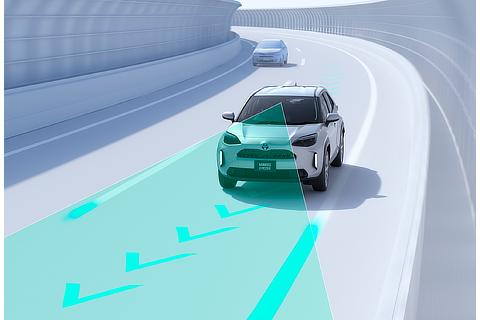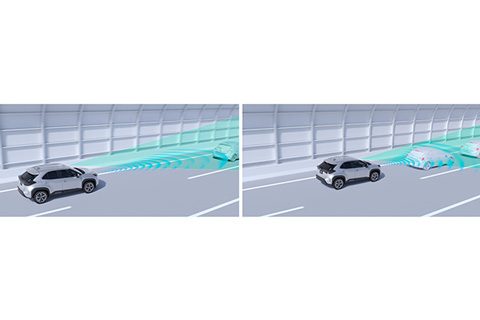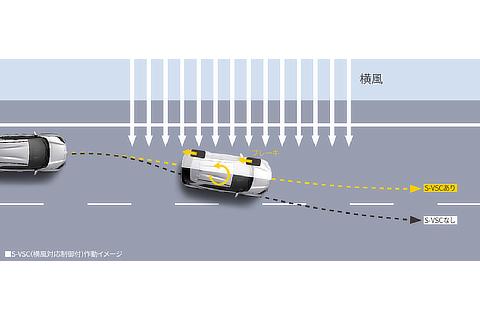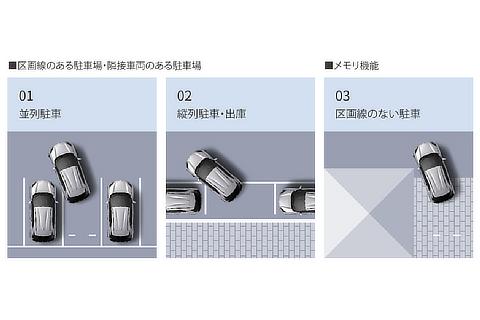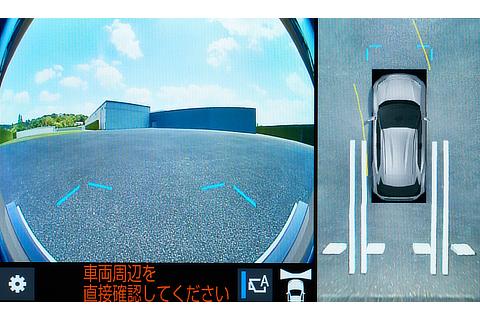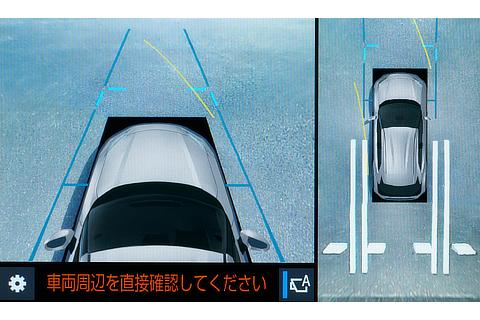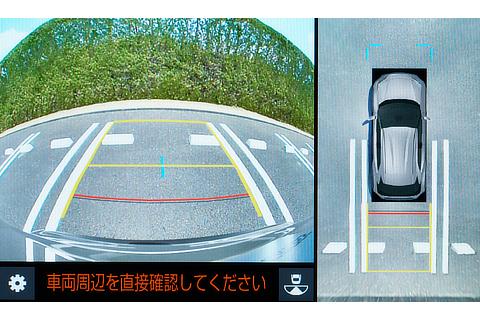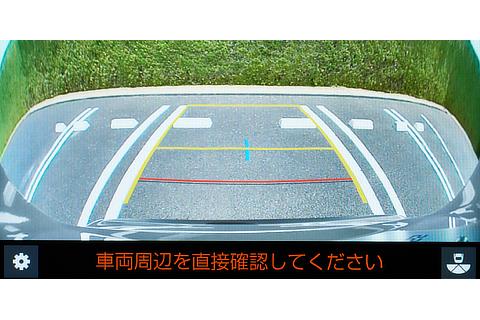Aug. 31, 2020
Toyota Rolls Out All-New Yaris Cross in JapanRevamping the Typical Concept of a Compact SUV, Yaris Cross Provides Novel Value
Yaris Cross carries on the nimble driving, advanced security and safety technology, and superior fuel economy of the Yaris series while providing new value as an urban-type compact SUV that not only provides convenience but is also imbued with the individuality and lifestyle of the driver and its passengers.
- Well-balanced and refined proportions that depict the robustness and presence unique to an SUV
- An easy-to-use and uncompromising luggage room supports an active lifestyle
- Employs a four-wheel drive system capable of responding to various road surface conditions for both gasoline-powered and hybrid system models
- The hybrid electric vehicle (HEV) system allows Yaris to achieve a world-class, top level fuel economy for its class that surpasses what is considered typical performance for an SUV
- Added many advanced features for a safe, secure, comfortable and convenient drive, as many consumers drive this class of SUV
Toyota City, Japan, August 31, 2020―Toyota Motor Corporation (Toyota) announced the release of the Yaris Cross, a new-model compact SUV. The Yaris Cross will be available through Toyota dealers nationwide from August 31.
-

- HYBRID Z (Front-wheel drive) (Options shown)
The development of the new-generation Yaris Cross aims to pursue new value as a compact SUV that not only offers convenience but also carries on the nimble driving, advanced security and safety technology, and superior fuel economy features of the Yaris series.
Specifically, as with the Yaris, the all-new Yaris Cross is Toyota's first compact vehicle to adopt the TNGA platform (GA-B). As a package that can make full use of this performance, in addition to the "condensed" design, the new model features lean, well-balanced and refined proportions that express the robustness and presence unique to an SUV. Although a compact SUV, the Yaris Cross offers easy-to-use and uncompromising luggage room that supports the active lifestyle of its driver and passengers.
A 4WD (four-wheel drive) system affords a seamless driving performance for a wide range of activities from urban driving to leisure activities. The gasoline-powered model is loaded with functions that offer a satisfying SUV driving performance, including 'Multi-terrain Select' that allows the driver to choose between three modes to adjust to road surface conditions. Toyota is also offering HEV models featuring the E-Four (electric 4WD system) for the first time on a compact car. Furthermore, the hybrid variant achieves world-class, top level fuel economy for its class (2WD, 30.8 km/L*1 in WLTC mode) that surpasses what is the typical performance of an SUV.
For security and safety technologies, Toyota Safety Sense, the company's newest active safety package, comes as a standard feature (excluding X "B package"). The decision from Toyota to equip the all-new vehicle with Toyota's latest technologies and features came following the Yaris because many consumers choose to drive compact class cars. This includes Toyota Teammate*2 Advanced Park, an advanced driving support system, including Full Speed Range Radar Cruise Control that supports driving behind another car and an Adaptive Hi-beam System (AHS).
The Yaris Cross renews the traditional concept of a compact SUV, including its driving performance, convenience and safety functions. It will provide new value as an urban-type SUV imbued with the individuality and lifestyle of the driver and its passengers.
| *1 | As evaluated by the Ministry of Land, Infrastructure, Transport and Tourism. WLTC (World Harmonized Light Vehicles Test Cycle) is an internationally recognized test cycle, and is based on average usage ratios for urban, suburban, and highway driving. 30.8 kilometers per liter is the fuel efficiency for the HYBRID X grade. |
|---|---|
| *2 | A general term for intelligent driving support technologies for highways, which was developed based on the Mobility Teammate Concept. This is Toyota's automated driving concept in which the car and driver act as partners, without the system taking over the driving, or as being a simple alternative to a human driver. |
Sales Outline
-
- Monthly sales target for Japan
- 4,100 units
-
- Unveiling event at dealers
- September 26-27, 2020
The KINTO ONE*3 "beloved car" subscription service allows customers to complete the entire purchasing process online, from requesting a quote, submitting the application to concluding the contract. It is available from just 21,010 yen (incl. tax) monthly*4 if using the seven-year lease plan with added bonus payments.
| *3 | A monthly fixed-sum service that provides voluntary insurance payments, vehicle tax, registration charges and taxes, breakdown repair, shaken (mandatory inspection) costs (for five- and seven-year plans), and regularly scheduled maintenance of the vehicle in a single package. https://kinto-jp.com/english/ |
|---|---|
| *4 | For the G Grade (gasoline specifications, 2WD) Display Audio (smartphone connectivity) package, without additional option, bonus monthly addition 110,000 yen (incl. tax) |
Production Plant
Ohira Plant / Iwate Plant, Toyota Motor East Japan, Inc.
Manufacturer's Suggested Retail Prices
Price range1,798,000 yen to 2,815,000 yen
| Engine | Transmission | Drivetrain | Price* (Japanese yen) |
||
|---|---|---|---|---|---|
| "B package" | M15A-FKS (1.5-liter Dynamic Force Engine) |
Direct Shift-CVT | FWD | 1,798,000 | |
| 4WD | 2,029,000 | ||||
| X | FWD | 1,896,000 | |||
| 4WD | 2,127,000 | ||||
| G | FWD | 2,020,000 | |||
| 4WD | 2,251,000 | ||||
| Z | FWD | 2,210,000 | |||
| 4WD | 2,441,000 | ||||
| HYBRID X | THS II with reduction gear (M15A-FXE 1.5-liter Dynamic Force Engine) |
FWD | 2,284,000 | ||
| E-Four | 2,515,000 | ||||
| HYBRID G | FWD | 2,394,000 | |||
| E-Four | 2,625,000 | ||||
| HYBRID Z | FWD | ◎2,584,000 | |||
| E-Four | 2,815,000 | ||||
- Direct Shift-CVT
- Direct Shift-Continuously Variable Transmission
- THS II
- TOYOTA Hybrid System II
- E-Four
- Electric four-wheel-drive system
| * | Includes consumption tax. Different pricing applies for Hokkaido and Okinawa. Does not include recycling fees. |
|---|
Vehicle Outline
- An urbanized, refined design that incorporates a power unique to SUVs
Exterior Design
- Based on the concept of "robust and minimalist", "Energetic Smart" is the keyword used to describe the all-new design of the Yaris Cross. Toyota pursues a design that is smart and energetic, and has a proportion that is beautifully well-balanced.
- The front end presents a fearless impression, owing to a clear, three-dimensional structure with the central front, lower front and fender providing a strong finish.
- The side is reminiscent of unwavering driving performance reflecting the dynamism given to the horizontal line of the upper body from the front to the rear combination lamps. The unique character line, which flows from the rear door to the front of the cabin, emphasizes the spaciousness of the cabin.
- The vehicle rear, with its square-shaped central portion and large back door opening, accentuates its high functionality. The fender, with a generous overhang, also expresses powerful robustness, in the same way as the front.
-

- Initial image of the exterior design
Exterior Color
There are eight body colors in all, including the newly-developed Brass Gold Metallic that is expressive and stands out, and Silver Metallic that is more three-dimensional than the previous silver. There are also seven, two-tone color types, which give off a sense of activeness.
Interior Design
- Expresses robustness by emphasizing the vertical line from the central console to the display audio (DA).
- The seating, steering, and shift lever among other features are optimally positioned. The TFT color LCD multi-information display offers excellent visibility, and the high positioning of the meter and Display Audio (DA) and adoption of the Head Up Display (HUD) minimizes the driver's eye movements, allowing the driver to concentrate on driving ("Eyes on the Road" concept).
- Soft padding, made from slush molding, is used at the top of the instrument panel. In addition, a new felt material is extensively used for the door trim. These and other factors give the cabin space a sophisticated and comfortable feel.
-

- HYBRID Z (Front-wheel drive) (Dark brown interior color) (Options shown)
- Spacious, easy-to-use luggage room with a height unique to an SUV
- When lowering the deck board, there is a luggage capacity of 390 L*5, which is top-class among compact SUVs. The luggage room can store*6 two suitcases (110 L) or two golf bags (9.5 inches). The luggage room boasts both height and width, making it conducive for storing a variety of luggage.
- This is the first compact SUV by Toyota to utilize the 40/20/40 split rear seat and the 60/40 split adjustable deck board. To keep the luggage from moving around, there is a combination of a utility hook and flex belt, making it possible to diversely arrange the luggage in the deck, and support an active lifestyle.
- The Yaris Cross is equipped with a convenient hands-free power back door when transporting luggage. There is also a smartphone key to automatically open and close the back door simply by kicking your foot under the rear bumper, which is a first for a Toyota compact SUV.
- In contrast with a conventional Toyota SUV, the door opens and closes nearly twice as fast.
- The Yaris Cross also comes with easy-to-use, ample storage space inside the cabin, and provides an easy-to-reach center tray and large front and rear door pockets as well.
- Offering a highly dimensional vehicle that is both an easy-to-handle compact car and a robust SUV offering driving performance that exceeds its class. 4WD model is also available
- As with the Yaris, Toyota employed the TNGA platform (GA-B) for compact cars as a fundamental component. This is to pursue lightweight and high rigidity with a low center of gravity. In combination with a revamped suspension, Yaris Cross achieves both agile handling and a high-quality ride characteristic of the Yaris series. It also delivers driving performance beyond its class by being both Confident and Natural (the vehicle remains stable while driving, yet responds naturally to the driver's intentions).
- Yaris Cross comes with a 4WD system to respond to various types of road surface conditions. The gasoline-powered model is equipped with functions that make the SUV ride satisfying. The HEV model is the first Toyota compact SUV to have an E-Four (electric four-wheel-drive system), ensuring safety, even when driving over snowy roads.
- The Yaris Cross is also loaded with the 'Multi-terrain Select' function (gasoline-powered 4WD model/first for a Toyota compact SUV) which allows the driver to choose from three driver assist modes depending on road surface conditions that contribute to an improvement in performance off-road and on slippery roads.
-

- Multi-terrain Select
- There is also a SNOW mode to contribute to smooth acceleration on slippery roads, including snowy roads, by controlling the torque. A TRAIL mode offers more traction by allocating an adequate drive torque to each tire in contact with a bad road surface (E-Four vehicle; first for a Toyota compact SUV).
- The car's downhill assistance control contributes to maintaining a steady low vehicle speed and stable cruising when traveling downhill (Gasoline-powered 4WD model and E-Four model; first for a compact Toyota SUV).
- The car is equipped with a new-generation hybrid electric vehicle system which uses a 1.5-liter inline three-cylinder Dynamic Force Engine based on the TNGA philosophy. In addition to powerful, seamless driving, it achieves world-class, superior fuel economy for its class (2WD, 30.8 km/L in WLTC mode) that surpasses what is the typical performance of an SUV.
- Carrying on from the former Yaris, Toyota has further developed and enriched the advanced safety, security, comfort, and convenience functions
- Toyota Safety Sense, the newest active safety package, comes as a standard feature (excluding X "B package").
- Pre-collision Safety System assists in avoiding collisions and alleviates damage by detecting pedestrians (day and night) and cyclists (day). The system expands the range of detection in the event of an accident at an intersection by detecting pedestrians crossing the street after turning left or right, or when turning right against oncoming traffic.
- Low Speed Acceleration Control supports the prevention of collisions and mitigates damage by suppressing the engine output or by lightly applying the brakes to suppress acceleration if there is an object in front of the car. The system also prevents depressing the accelerator pedal with excessive force when starting from a standstill or during low-speed operation.
- The Emergency Steering Assist function secures vehicle stability and contributes to deviating from the driving lane by assisting with steering when a driver executes evasive maneuvers in situations where there is a high likelihood of a collision with a pedestrian, and judges whether there is enough space in the current lane to avoid said collision.
- Full Speed Range Rader Cruise Control that supports driving behind another car to make long drives more comfortable.
- When using the Radar Cruise Control, the Lane Tracing Assist (LTA) provides support for steering to keep the vehicle in the center of the lane.
- The Adaptive High-beam System (AHS) precisely controls LED lights to automatically shade areas where the lights are hitting the car ahead or on-coming vehicles while keeping the high beams on the surrounding areas to ensure superior visibility at night (Optional. First for a Toyota compact SUV).
- The Road Sign Assist (RSA) promotes safe driving by reducing the number of road signs missed using a visual alert which displays road signs recognized by a camera.
- Secondary Collision Brake*7 (first for a Toyota compact SUV)
- When an SRS airbag deploys upon the SRS airbag sensor detecting a collision, this function alleviates damage by automatically controlling the brakes and brake lights, and slowing down the vehicle to prevent a secondary collision.
- Blind Spot Monitor (BSM)
- The BSM uses a millimeter-wave radar to detect vehicles at the driver's rear side of the car that are difficult to see using door mirrors up to a maximum of around 60 meters to the rear in the next lane. An indicator in the door mirror lights up when a vehicle approaches. The driver can then operate their turn signal to make the indicator blink to arouse attention.
- S-VSC with lateral wind control (first for Toyota)
- Deploys when strong lateral winds are detected when driving on the highway. This function keeps the vehicle from crossing over the lane to support safe driving.
- As with the Yaris, the Yaris Cross is equipped with the Toyota Teammate (Advanced Park), an advanced driving support function that also controls acceleration and braking, along with steering (first for a Toyota SUV).
- Parking can be accomplished by simply operating the shift lever according to instructions. When detecting obstacles or other impediments, the system alerts the driver with audible warnings and applies the brakes to help avoid minor collisions by using cameras and ultrasonic sensors to monitor the vicinity of the car. Furthermore, by setting the parking spot in advance, the system can also park in spots without white lines.
- Seat position and angle can be adjusted electronically. There is also an abundance of other comfort functions, including the 6-way power seat to easily achieve an optimal driving position, Turn Tilt driver seat to facilitate entering and exiting the vehicle and thereby alleviate burden on the legs and hips, and a steering and seat heater to support driving on cold days.
- An accessory power outlet (AC100 V / 1,500 W) is available for the hybrid models. With the accessory, electricity from the vehicle outlet can be used to power electrical devices and appliances. Additionally, the vehicle can serve as an emergency power source in cases such as blackouts.
Latest Connected Services
All models come equipped with Display Audio (DA) and DCM*8 as standard features. Smartphone applications and other functions can be linked with SmartDeviceLinkTM*9 (SDL) and Apple CarPlay®*10 / Android AutoTM*11 improve convenience and support a rich car life.
| *5 | Luggage room capacity, with the deck board removed, for the gasoline-powered 2WD model. |
|---|---|
| *6 | In cases with a deck board (lower position). |
| *7 |
|
| *8 | Data Communication Module |
| *9 | SmartDeviceLink Consortium, trademark. Open source for connecting smartphone apps and cars. |
| *10 | A registered Apple Inc. trademark in the United States and other countries. |
| *11 | Google LLC, trademark |
- Link to the "Yaris Cross" webpage (Japanese only)
- https://toyota.jp/yariscross/
"Achieving zero, and adding new value beyond it"
As part of efforts to pass our beautiful "Home Planet" to the next generation, Toyota has identified and is helping to solve issues faced by individuals and overall society, which Toyota calls "Achieving Zero," hoping to help reduce the negative impacts caused by these issues to people and the environment to zero. Additionally, Toyota is also looking "Beyond Zero" to create and provide greater value by continuing to diligently seek ways to improve lives and society for the future.
- About Beyond Zero
- https://global.toyota/en/mobility/beyond-zero/
Toyota Motor Corporation works to develop and manufacture innovative, safe and high-quality products and services that create happiness by providing mobility for all. We believe that true achievement comes from supporting our customers, partners, employees, and the communities in which we operate. Since our founding over 80 years ago in 1937, we have applied our Guiding Principles in pursuit of a safer, greener and more inclusive society. Today, as we transform into a mobility company developing connected, automated, shared and electrified technologies, we also remain true to our Guiding Principles and many of the United Nations' Sustainable Development Goals to help realize an ever-better world, where everyone is free to move.
- SDGs Initiatives
- https://global.toyota/en/sustainability/sdgs/




